-
News & Trends -
Sales -
Marketing Related Topics -
B2B Software Guides Related Topics -
Free Tools & Resources -
- About Us About Us


A lead magnet is a free asset that you offer to leads in exchange for their contact information. The best lead magnets provide relevant value to your audience and are attractive enough to influence potential leads to opt in to your funnel on their own. To do so, marketers pick which type of lead magnet they want to create and then follow a step-by-step process to build and design it, often with the help of templates or design tools.
Marketers create various types of desirable lead magnets to capture information from their target audience. Lead magnets are often downloadable content upgrades like ebooks or checklists, but they can also be opt-ins for discounts, free trials, or newsletter subscriptions. Regardless of type, they are an affordable way to gather email addresses and phone numbers you can use to nurture your leads while also making your audience happy.
A successful lead magnet will satisfy several main requirements that help it convert and leave a good impression. It must be specifically tied to solving one pain point and relevant to your brand so as not to confuse the leads. It also has to be actionable so leads know they’ll get value from it right after getting it. To ensure your leads are happy with the offer, it should also be easily accessible for them and provide tremendous value to their lives or business.
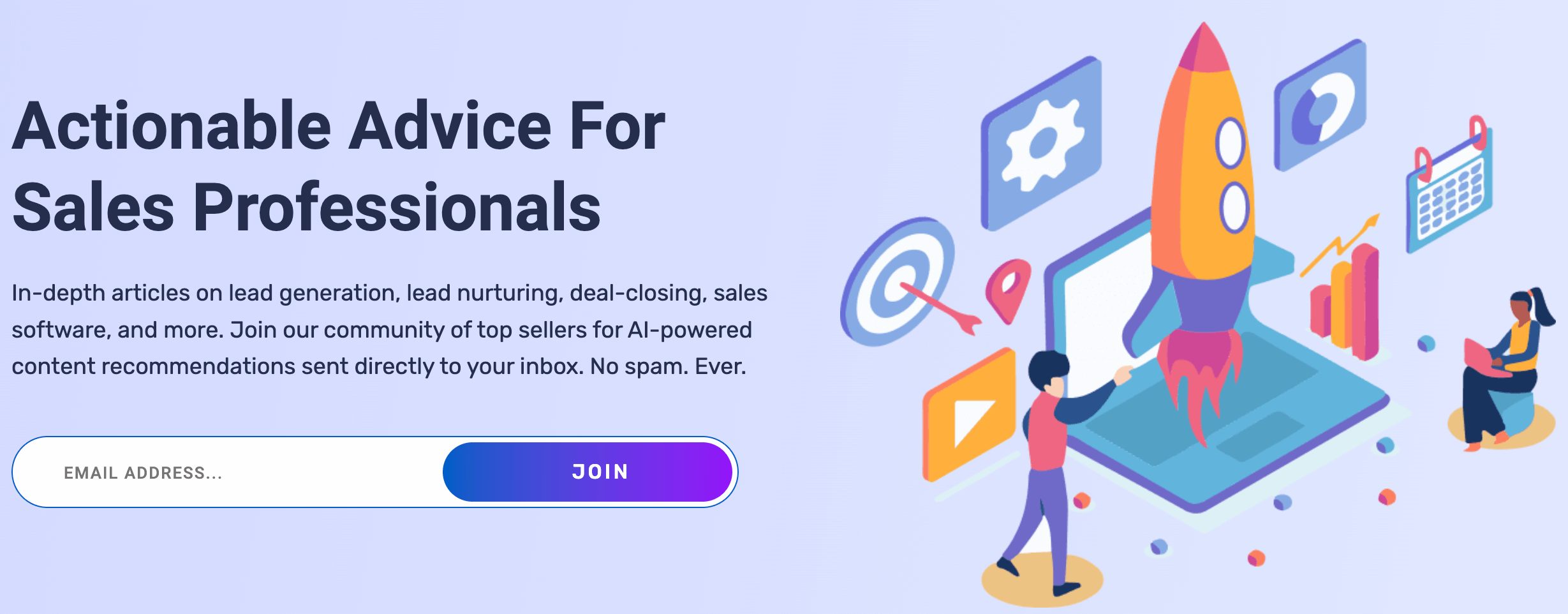
There is a process you can follow to create your lead magnet: First, pick a buyer persona to target and select the issue you’re solving for that customer type. From there, choose the type of lead magnet to create, write the first draft, and design it using online tools. Lastly, embed the lead magnet on your website, deliver it to your leads, and promote it like crazy to achieve an ever-growing number of downloads.
There are several design tools on the market that can help you create a quality lead magnet. Many businesses use powerful options like Adobe Photoshop or InDesign, but they can be pricey and hard to use if you don’t have a design background. Another option is to find a template and build your lead magnet from it. Templates are typically cost-effective and easy to use, and they can save busy marketers a lot of time.
To help design the best lead magnet possible, there are many templates available to use for free. There are templates available for all types of lead magnets, and all of them streamline the creation and design process so you can more quickly start generating leads. If you’d like to create your own template, you have that option as well. Below are some of the best places and ways to find or create lead magnet templates, often for free.
Canva offers thousands of customizable templates that you can use to create, design, and download your own lead magnet that looks professionally done. Create ebooks, checklists, infographics, case studies, and more. It also includes images and design elements you can drag and drop onto your lead magnet. The free version is powerful enough for most projects, but you can upgrade to receive access to premium photos and features.
A template will help you create a valuable, appealing lead magnet that leads will love receiving for free. For more places to find lead magnet templates, check out Copy Goals' articles on 100+ free lead magnet templates. Aside from having access to templates, it's helpful to see what creations are possible by looking at examples from other businesses.
There are many types of lead magnet types that convert, ranging from a simple newsletter to a complex hour-long training webinar. However, rather than creating multiple lead magnets, focus on testing one or a few high-quality options. Low-quality and low-effort lead magnets can actually hurt your lead generation efforts, so make sure they’re something you can be proud of.
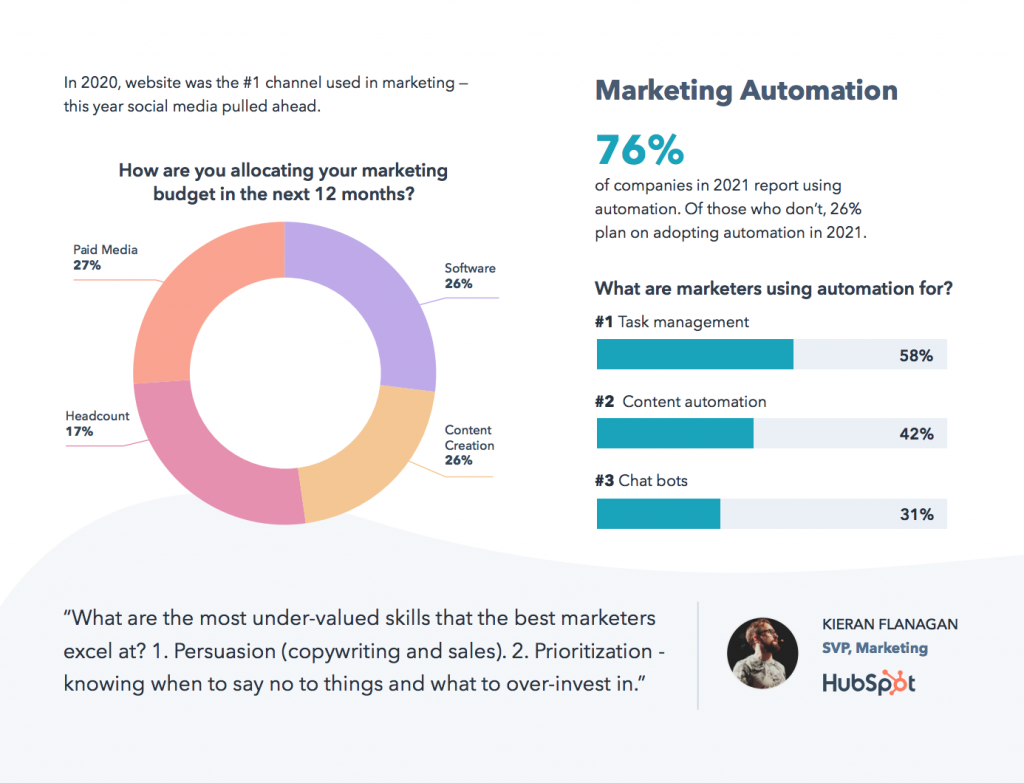
Who It’s Right For: B2B companies looking to attract executives and decision makers in a specific industry, especially finance, marketing, and other industries hungry for analytics.
An industry-relevant study is a downloadable resource that teaches a lead something they want to know through data-derived insights and facts. They range from 2-50 pages and include white papers, industry reports, trends, or forecasts. For example, if you sell to marketers, you may create a study on the best ways to drive sales using event-based marketing, the results being based on data you’ve gathered from research.
The main challenges with industry studies include gathering data and conducting research. If you don’t have a partnership or agreement to use someone’s independent research, you may get in trouble using their proprietary data. You can get around this by conducting your own research using experiments, observation, aggregating existing research, or by collecting your own internal information (through surveys or existing data) and compiling it into a report.
Business professionals, especially executives, find this information valuable because it helps them make data-driven decisions without having to do the frontline research and number-crunching themselves. So advertise them to these decision makers on LinkedIn and host them on your blog posts that relate to the study’s data points.
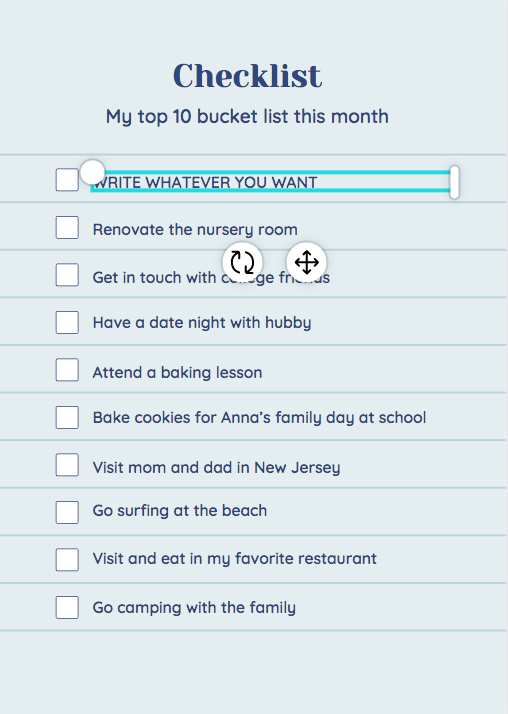
Who It’s Right For: Consulting or service-based sellers who offer a process for solving customer pain points or companies that need to create a quick and easy lead magnet that converts.
Checklists or cheat sheets are 1- to 3-page downloadable resources that list out the steps of a process or the items needed to achieve a goal. It could outline the steps of starting a blog or the essentials for a backpacking trip in the woods. Regardless, its goal is to help a lead stay organized and on track as they execute a tedious process. Cheat sheets are also shorter than content like ebooks and guides, making them easier to create and iterate on.
An easy way to create a checklist of your own is to outline the steps involved in addressing a problem, or part of a problem, that your business directly solves. For example, a home inspection company may create a content upgrade cheat sheet like "Home Inspection Cheat Sheet for Buyers." They’d write down what needs to be done to effectively inspect a home.
Marketers can then transform the process checklist into a simple lead magnet that is organized and easy to digest using templates. You don’t have to do anything fancy with the design. The value comes from being able to save the checklist and use it whenever they do the process. Checking it off as they do it is also helpful, so offer it in a printable format. Checklists are great lead generators for those on a time crunch. Advertise them everywhere your audience goes.
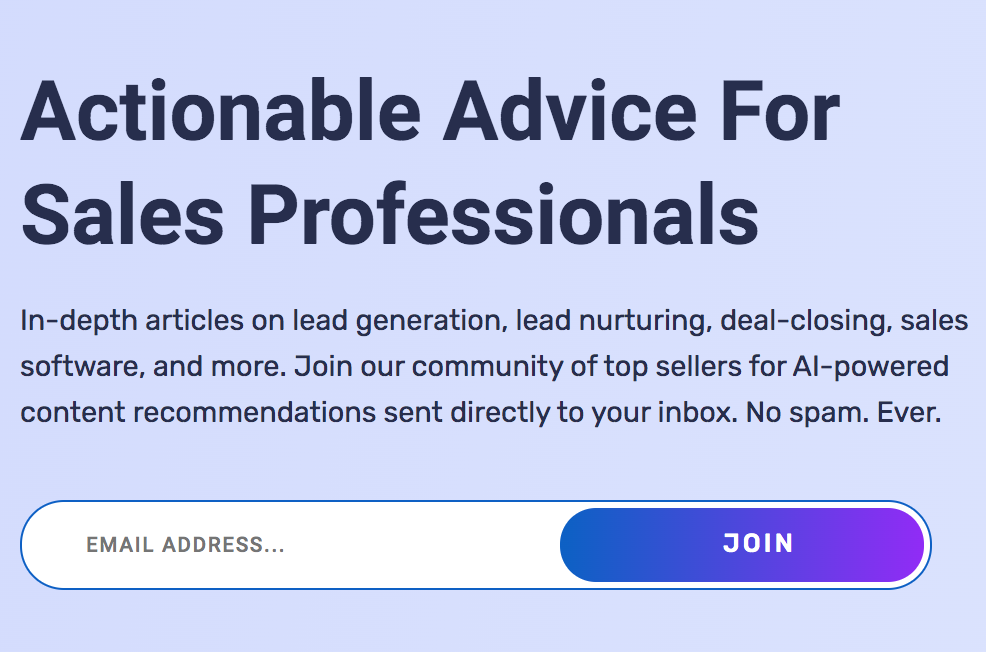
Who It’s Right For: Online businesses that create consistent content to share with their audience.
Email newsletters that are niche-focused are one of the top-performing lead magnets and one of the best community-building tools. Businesses use an email newsletter to share and repurpose existing content in a way that adds value to their readers. This includes things like sharing internal blog posts as well as relevant third-party content and information. Readers subscribe to stay on top of trends, get insights, and learn more about an interest.
Starting an industry-specific newsletter doesn’t have to be complicated. Send 2-3 emails per week to your audience and provide value-adding content. Usually, this takes the form of an article roundup with as many as 3-5 article features, but it can also be a single-post send if your business isn’t big enough to generate that much content. Still, it’s not a bad idea to share other people’s content as well as your own, thereby maximizing the value of the newsletter.
One of the best places to host your newsletter is front and center on your homepage, as we’ve done at Selling Signals in the example image above. For these lead magnets, all you need to do is write an eye-catching title and a subtitle explaining what type of information subscribers will receive. Make sure it’s something they’re interested in learning more about. Under the subtitle, host a lead capture form for users to type in their email address.
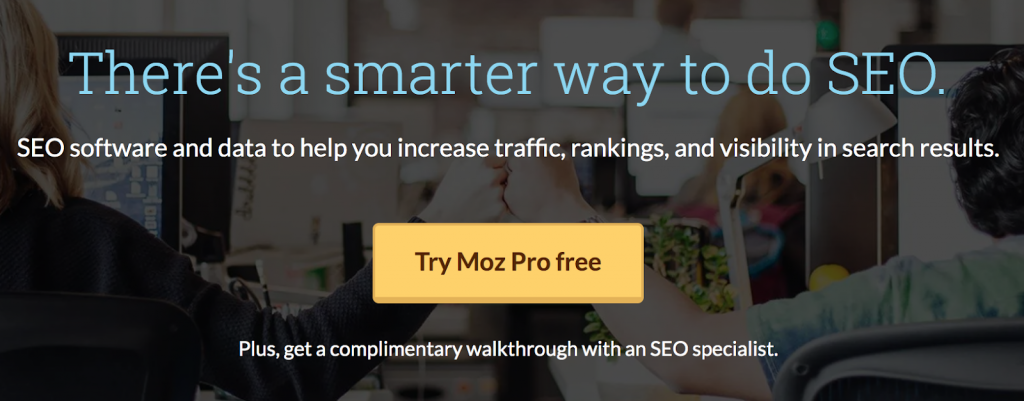
Who It’s Right For: Subscription or membership-based businesses that want to get their users hooked on their service or product. This is especially effective for software tools or apps.
A free trial of your product or service is a great lead magnet for those selling subscription-based services because it gives the lead a chance to test drive your offering. The key to using a free trial offer successfully as a content upgrade is by making it limited. This could mean a time constraint, a cap on available features, or some combination thereof. We recommend a week-long trial with access to all features so the user can really experience ownership and get hooked.
Businesses often advertise the lead magnet right on their homepage to capture visitors or on their product page to give shoppers a way to get up close and personal with the product. Above is an example of Moz Pro’s free trial offering. Users who click the button are taken to a landing page where they can submit their contact information and get a month-long free trial.
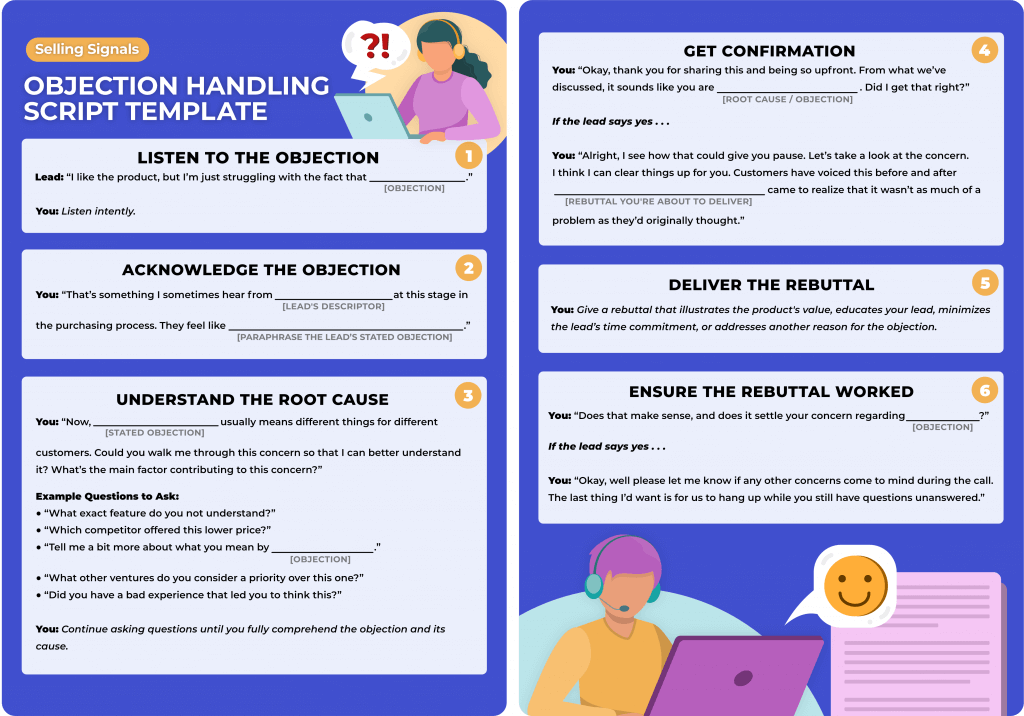
Who It’s Right For: Marketers targeting an audience that’s consistently creating something digital and needs a way to streamline its production.
Templates are 1-10 page downloadable resources used as a customizable foundation for some digital creation, whether that be a sales deck, a cold email, or even a lead magnet. They can make the creation process faster for your leads and enable them to create professional-looking digital products. Leads can also use the template directly; for example, our readers can use our objection handling template to easily prepare for objections from their leads throughout the sales process.
Anything that’s frequently performed or very repetitive is something you can create a template around. For example, a B2B salesperson may want a template for business proposals so they don’t have to start from scratch every time they need to send one out. If they come across a business that's offering one, they’ll happily submit their contact information for it.
Often, the best place to host a free template lead magnet is in an article or blog post that’s teaching your audience how to perform a specific process. Simply create a section titled “Free {Process} Template,” describe the template, and include a picture of it. Below the picture, include a CTA button they can click to open up a form they’ll fill with their contact information.
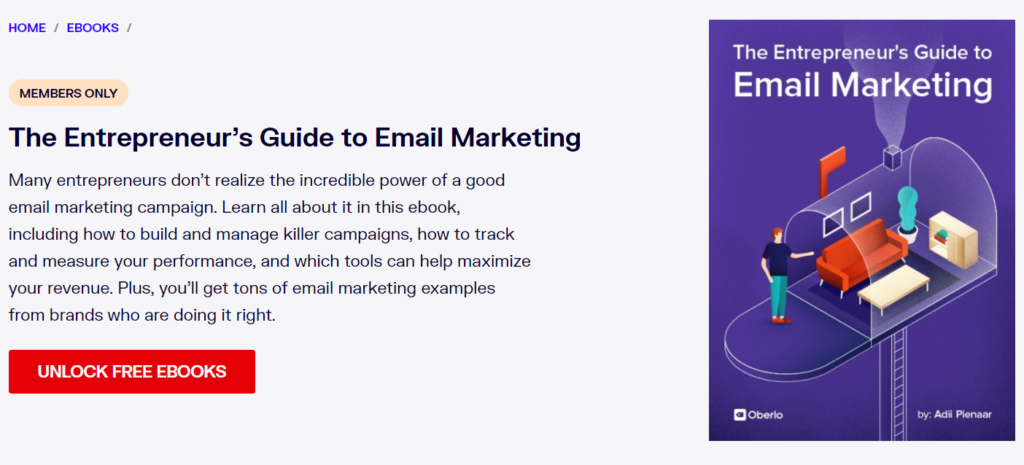
Who It’s Right For: Businesses that want to be seen as an expert in their field and provide in-depth information to quality leads.
Ebooks are typically 2,000- to 2,500-word downloadable resources that teach a topic your leads want to learn more about. They’re usually broken into 6-10 chapters and include visuals, quotes, and in-depth research. The most effective ebooks to use as lead magnets are typically ultimate guides or how-to guides on a niche topic, which can help your audience solve a problem or achieve a goal with more comprehensive information than with other lead magnets.
If you already create great content via engaging blog posts or something similar, you can combine or repurpose multiple blog posts within a single topic into a high-value ebook that contains more depth on a subject than they'd get reading your individual blog posts. Ebooks also serve as a way to position yourself as an expert on a subject, building trust and credibility with your leads.
Many businesses promote their ebooks on social media through paid ads or organic content posting. However, one of the best places to promote these ebooks is on blog posts related to or foundational to the ebook’s topic. You might plug the below marketing ebook into an article about how to write nurturing emails. The reader is already keen on learning more, so there’s a good chance they’ll find your ebook offer intriguing and trade their contact information for it.
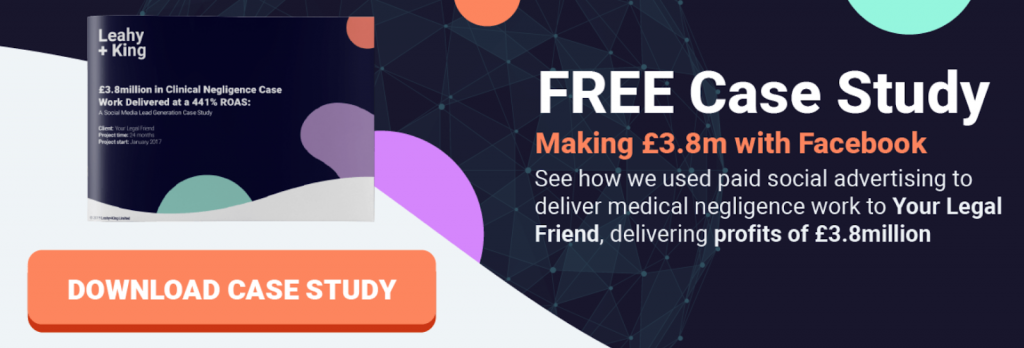
Who It’s Right For: Businesses with big wins to share and an audience that likes to evaluate products and services on their own time.
Case studies are documents explaining how your company helped a specific client achieve their goals. They are valuable because they combine the educational aspects of industry studies with the social proof of customer success into a single content upgrade. The best case studies focus on one specific story that highlights customer success and uses things like testimonials and data to prove the value-add of your product or service through a real-world example.
The basic format of a case study includes the overview, the challenge, the approach, the solution, and the results. Use customer interviews and data points to highlight tangible numbers you were able to achieve, and show specifically how they were accomplished. Case studies can be branded or anonymous. Branded case studies have much higher value, but make sure you get permission from your customer first.
Case studies are especially effective for service-based industries that want to prove their worth. To make the most out of your case study, share it on social media, your product pages, and directly with potential leads. This will help people interested in your solution get some more information before they make their decision, and they’ll happily provide contact information to see why others like them paid for your offer.
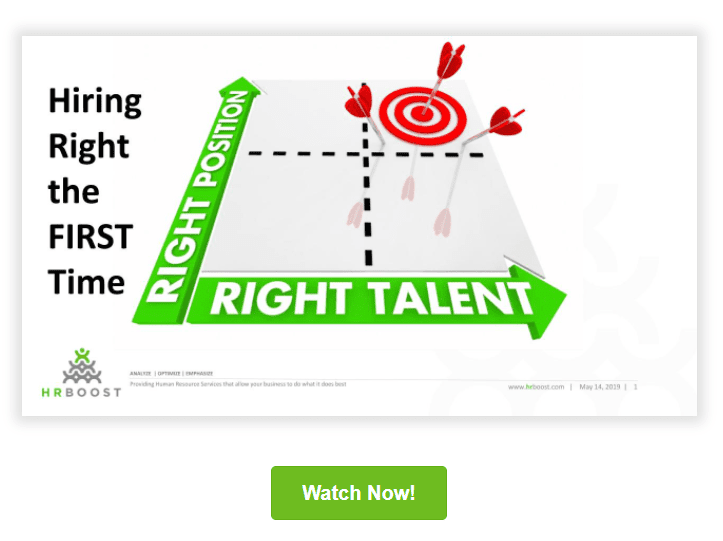
Who It’s Right For: B2B and B2C brands with audiences that rely on self-development or individual learning.
Webinars typically denote some type of pre-recorded and branded training, education, or thought leadership sessions. Oftentimes you’ll find webinars are focused on a specific type of persona (for example, training for HR professionals) or a specific skill (for example, software coding). They usually run around an hour, but could be shorter or longer depending on the format.
Examples of common webinar content are training materials such as “How To Effectively Build A Sales Pipeline From Scratch.” Make sure your webinar is adding value to people and is authoritative and informative enough to make a strong impact on viewers. Someone who attends a webinar should walk away feeling empowered and equipped.
Webinars have the flexibility of pre-recording them or doing them live. Many webinars are also evergreen content, meaning they can be reused in offers over the long term. However, you could also advertise an option to get a seat at an upcoming live webinar. This is especially useful if you’re hosting an expert or big name from the field as a guest.
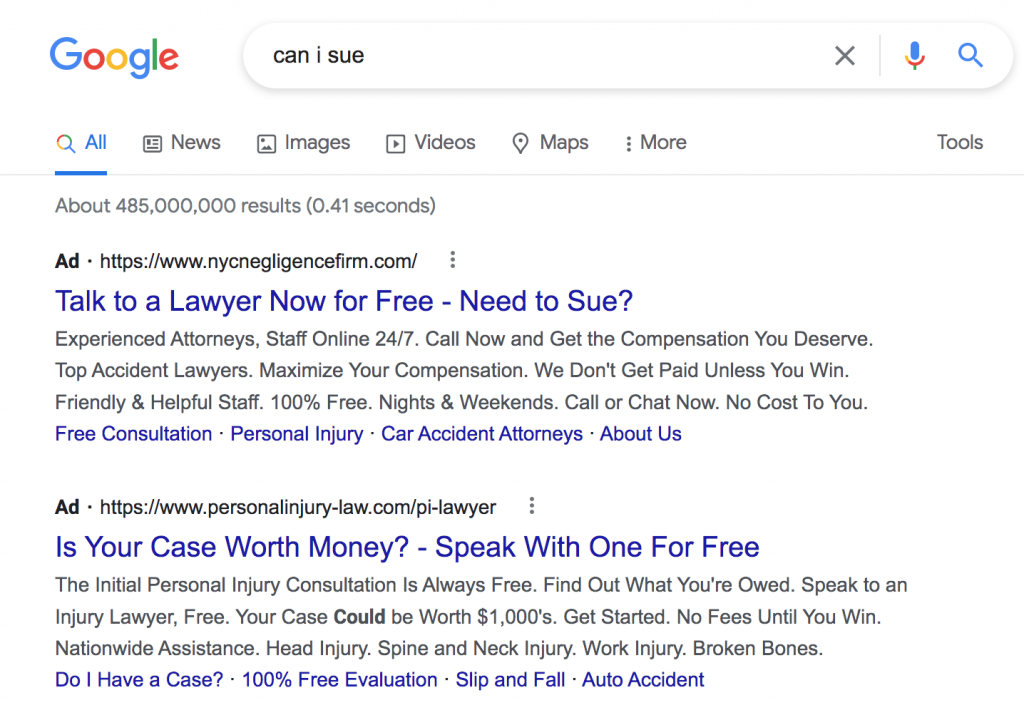
Who It’s Right For: Service-based salespeople looking to book phone calls or in-person meetings with leads who want to learn more about the product or service.
A free consultation represents a meeting between a salesperson and a potential lead in which the sales rep listens to the lead’s particular problem and gives them their initial thoughts about how to go about solving it. If the lead is considered a good fit for this business, this solution will likely be the service the salesperson’s business provides. For example, someone with tax challenges might take a free consultation with a tax advisor and end up employing them.
To make your consultation as beneficial as possible, ensure that the right salesperson is speaking with them — the one with expertise in their area of concern. Also, have the sales rep ask them questions like a doctor would to a patient, thereby qualifying them in the process. Also, give multiple resources to check out aside from your business to build trust and win them over.
The best place to offer a free consultation is in PPC Google ads attached to specific search queries related to your business offering. For example, a law firm might run a free consultation ad on the search engine results page for the query “can I sue my landlord?” You could also host the lead magnet on your main page to capture the contact information and land meetings with website visitors. People value time with an expert, especially if it’s free.
According to GetResponse, 58.6% of marketers said short-form written content like cheat sheets, newsletters, or ebook samples had the highest conversion rates. These are pieces of content that are easier to create, so you can experiment with different versions and see which ones convert the best. Ultimately, the lead magnet you choose to offer should directly relate to your business and your product or service.
The process for creating a lead magnet begins with defining your target audience and selecting a single pain point you can resolve for them. From there, you have to create the magnet, either from scratch in a blank document or using a template. After the content is written, filmed, or created, start designing the layout and look of the magnet inside a template or with design tools. And finally, embed it on your site with a lead capture form and start promoting it.
Choose or create a buyer persona that represents the people you want to attract with this lead magnet. A buyer persona personifies the characteristics and needs of a segment of your market. Businesses might have multiple buyer personas — e.g. a 50-year-old surfer from Maine and a college surfer in LA.
When offering a lead magnet, go after only one persona. Understanding the people you’re trying to attract helps you tailor the lead magnet to these leads’ specific needs and pains. As for which buyer persona to focus on, start with the one that you can bring the most value to with a free offering. It might be worth focusing first on high-spenders or company decision makers who will more likely buy after converting.

After you’ve chosen which buyer persona to go after, select one of their most pressing pain points that you can solve with your lead magnet. Once again, specificity is crucial. A lead who easily comprehends what your lead magnet is solving for them when they see it advertised is more likely to download it. If you focus on solving multiple pain points, the messaging might become confusing. Worse, the content might half-solve two problems and leave them unhappy.
If you’re unsure of what pains your audience has, do some research via these ways:
Once you know which pain point you are solving, you can turn it into a value proposition to use in the title displayed on your lead magnet, its advertisements, and its landing page. For example, if the pain point for your target audience of college students is “I can’t figure out which index funds to buy,'' your value proposition and title could be “Learn the three best index funds for college students.” Anyone struggling with that will likely want to have the lead magnet.
You now need to pick the right type of lead magnet to solve that pain point. You have many choices to choose from, including checklists, ebooks, reports, and more. The most important factor is that the type delivers the information to the lead in the best way possible. However, there are other things to consider, like your current resources and what your competitors are using successfully, that will help you determine which lead magnet type is right for you.
Start your process by looking at your existing content. You may already have a newsletter or a free trial offer available that you can use to satisfy your audience’s needs. Or maybe you have a series of blog posts you can package into an ebook or an article about a tricky process you can turn into a more digestible checklist. There’s no point in struggling to create a lead magnet with new content if you already have existing copy you can deploy.
If you don’t already have content you can repurpose into a lead magnet, think about what you can create with the resources you have available. If you’re an individual business owner or solopreneur, you might be limited by your time or knowledge. If you’re a member of an organization, you could work with teammates or across departments to create one. If short on everything except money, you could always outsource its creation to a writer or creative.
One easy way to come up with ideas for your lead magnet is to look at what your top competitors are doing. There’s no need to reinvent the wheel if you identify a system that’s clearly working for similar/competitive brands within your industry. Identify the brands in your space that are the most successful with content marketing and recreate similar content in your own voice. Do some detective work and check their social pages and sign up for their email lists.
If you’re struggling to pick, just begin with one of the lead magnets that takes the least bandwidth and money, namely checklists. Though they’re easy to create with templates, people still love downloading them because of how easy they make processes they hate tracking on their own. After you’ve chosen your lead magnet type, you can start building it.
Now it’s time to create a valuable resource. This usually involves starting from scratch and writing it in a Word document, especially if it’s an ebook, industry report, case study, or any other lead magnet that’s word-based and requires rewriting and peer editing. It’s usually best to write out a basic first draft and then transfer the text into a design tool or template afterward.
This also goes if you’re creating a video course. You have to write the script and then shoot and edit the video before you turn it into a beautiful lead magnet. If you’re creating a quiz, you need to think of and jot down the questions, answers, and results before turning them into an interactive quiz.
While writing or filming, ensure your content is highly valuable, in your brand’s voice, and actionable. A user should be able to derive tremendous value from it immediately after downloading it. Go through edits to make sure the content is also as clearly written as possible. After you’ve finished the final draft, you can enhance and design it further within a dedicated tool or features within the template software.
There are plenty of design tools to choose from that will make your lead magnet glow and look professional. Most have free templates and design features and offer upgrades if you want to do more to the lead magnet.
Here are some tools to help you design different types of lead magnets:
There are design tools for video, image, audio, and written lead magnets. To learn more about the different types of tools and their features, check out ClickyDrip’s article on the 15 best lead magnet design tools.
Now it’s time to design your lead magnet and make it as attractive and organized for your target audience as possible. Use your chosen design tool to elevate your current creation. If you started from scratch and are still on a Word document, transfer the content into a design tool or pre-built template that will likely have features to upgrade the font, add visuals, and drag-and-drop other design elements like quotes and diagrams.
Regardless of where you’re designing your lead magnet, there are some practices to follow:
HubSpot’s ebook template exemplifies each of the best practices mentioned above. The font is easy to read, the words take up just the right amount of the page, it's well-formatted and uses colors to separate sections, and the visuals are engaging. Plus, the cover page is attractive yet simple:
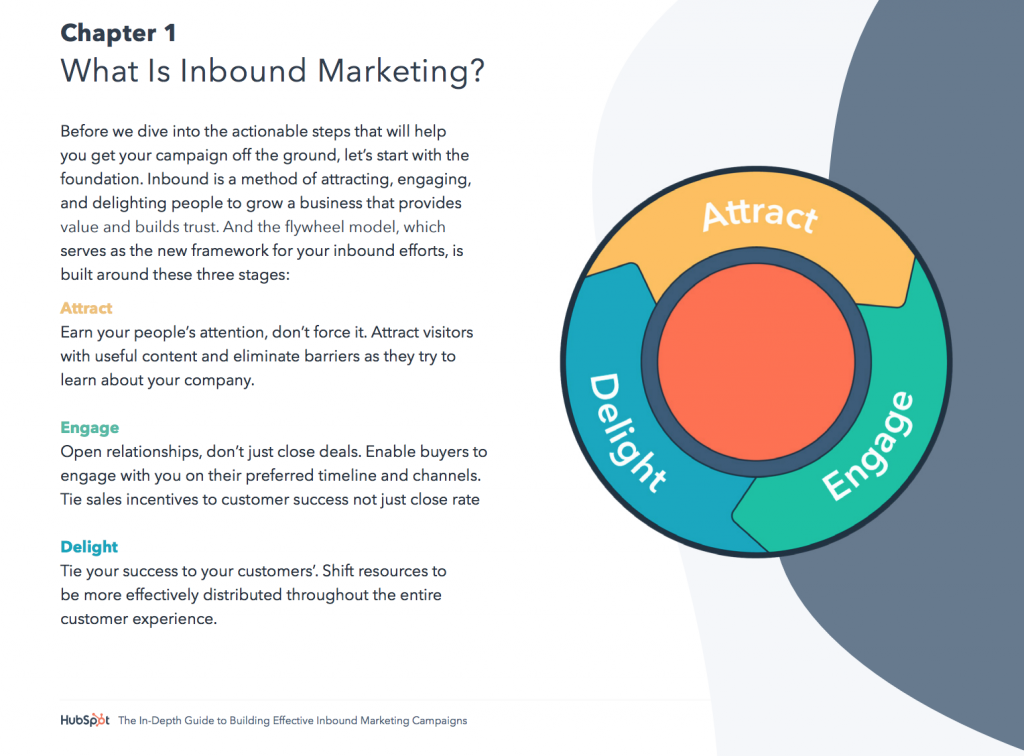
If designing the magnet sounds like too much to take on, you can outsource it to a freelance designer on freelance marketplaces like Upwork or Fiverr. Either way, by the time the offer is complete, it should be something you’re proud to stamp your company’s name on. And leads should feel amazed that they were able to get their hands on such a valuable asset for free and become more trusting of and interested in your brand.
Once you've created and designed your magnificent lead magnet, embed it on the most important pages within your lead generation website. Whether you embed it directly on a page or use some type of pop-up across multiple pages, your lead magnet should be easily accessible for your leads to see and download in return for their contact information, which they will submit into a web form facilitated by lead capture software.
You can host your lead magnet on your website with the following options:
In all the above cases, you decide what information to capture in the form. Most businesses prioritize email addresses so they can build lists for email nurturing campaigns. Many also collect names, job titles, or other information that will help them personalize their lead nurturing. As a rule, the more fields you have on your form, the higher the likelihood of visitor dropout. So prioritize the field questions that will best help you nurture your leads into closed sales.
One of the primary ways you can embed your lead magnet is by using lead capture software. For more information on this, check out our article on the best lead capture software, including their use cases, features, and pricing.
After the contact information is collected, you need to deliver the actual lead magnet to the lead. This is typically done through an automated email response via a tool like Mailchimp that directs the prospect toward the download of the content upgrade via an email with a link. With Mailchimp, you can set up the email to automatically send after a lead fills out the related form.
For example, here’s how you set up lead magnet delivery in Mailchimp:
Most other email automation tools will have this same process for setting up email lead magnet delivery. Another popular tool for setting this up is ActiveCampaign, which is a top email marketing CRM. For those on a budget, there’s also Thrive Leads ($97 starting price), a WordPress lead generation plug-in. WordPress users should check out Rob Powell’s guide on how to set up magnet delivery with Thrive Leads.
Unlike redirecting leads to the magnet’s PDF file, which some marketers still do, this more advanced and effective email method uses double opt-in, which protects you from getting bots on your email list. After opting in, leads have to actually go to their email and click the link you sent, which confirms to you that they’re real people. In the long term, this will save you from spending money email marketing to bots who filled out your lead magnet opt-in form.
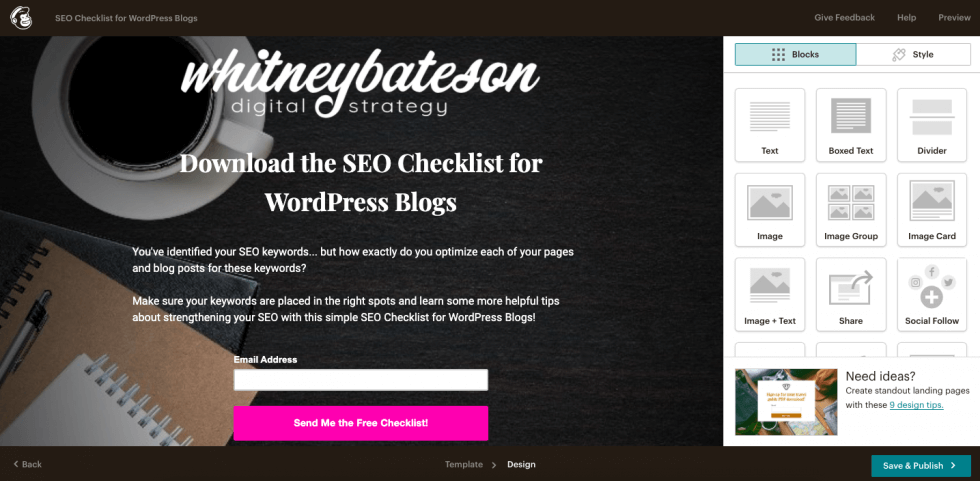
When you’ve properly set up a lead magnet, your active and passive marketing efforts should both contribute to driving more traffic toward it. Leads will find it in your blog posts, product pages, homepage, and other spots that they visit where it’s advertised. You can also direct more targeted traffic toward your lead magnets in your social media posts and email outreach.
Here are the best places to promote your lead magnets:
There are some content distribution tips you can follow to get the most mileage from your lead magnets. First, try republishing your lead magnet often. Second, repackage your lead magnet — you can split up long-form content into short blurbs and combine short-form content to make longer content. Third, repurpose your lead magnet. This is similar to republishing content but framing it in a brand new context or within a new conversation.
The point of a lead magnet is to attract new leads, so continually remarket your lead magnet across different channels to ensure new leads consistently come in. Lead magnets yield the most ROI when you can make them once and distribute them forever.
Lead magnets are one of the most important parts of inbound lead generation. Now that you understand how to create and deploy them, you can go out and get new leads for your business. By taking advantage of content upgrades, you should be able to increase the volume and conversion rates of your lead generation funnels.


Sam is a former SaaS sales rep turned freelance writer. He spent his career selling real estate technology to C-suite executives before switching over to blogging, where he now covers sales, marketing, and small business topics. Sam specializes in lead generation, lead nurturing, and deal closing articles for Selling Signals. When he’s not researching the latest sales trends, he’s either penning short stories, hiking, or reading in NYC’s Washington Square Park.

Selling Signals delivers actionable advice for sales and marketing professionals. Learn strategies that help you hit targets, strengthen customer relationships, and win more business. Get expert advice on lead generation, sales processes, CRM software, sales management, and account management directly to your inbox.
Property of TechnologyAdvice. © 2025 TechnologyAdvice. All Rights Reserved
Advertiser Disclosure: Some of the products that appear on this site are from companies from which TechnologyAdvice receives compensation. This compensation may impact how and where products appear on this site including, for example, the order in which they appear. TechnologyAdvice does not include all companies or all types of products available in the marketplace.